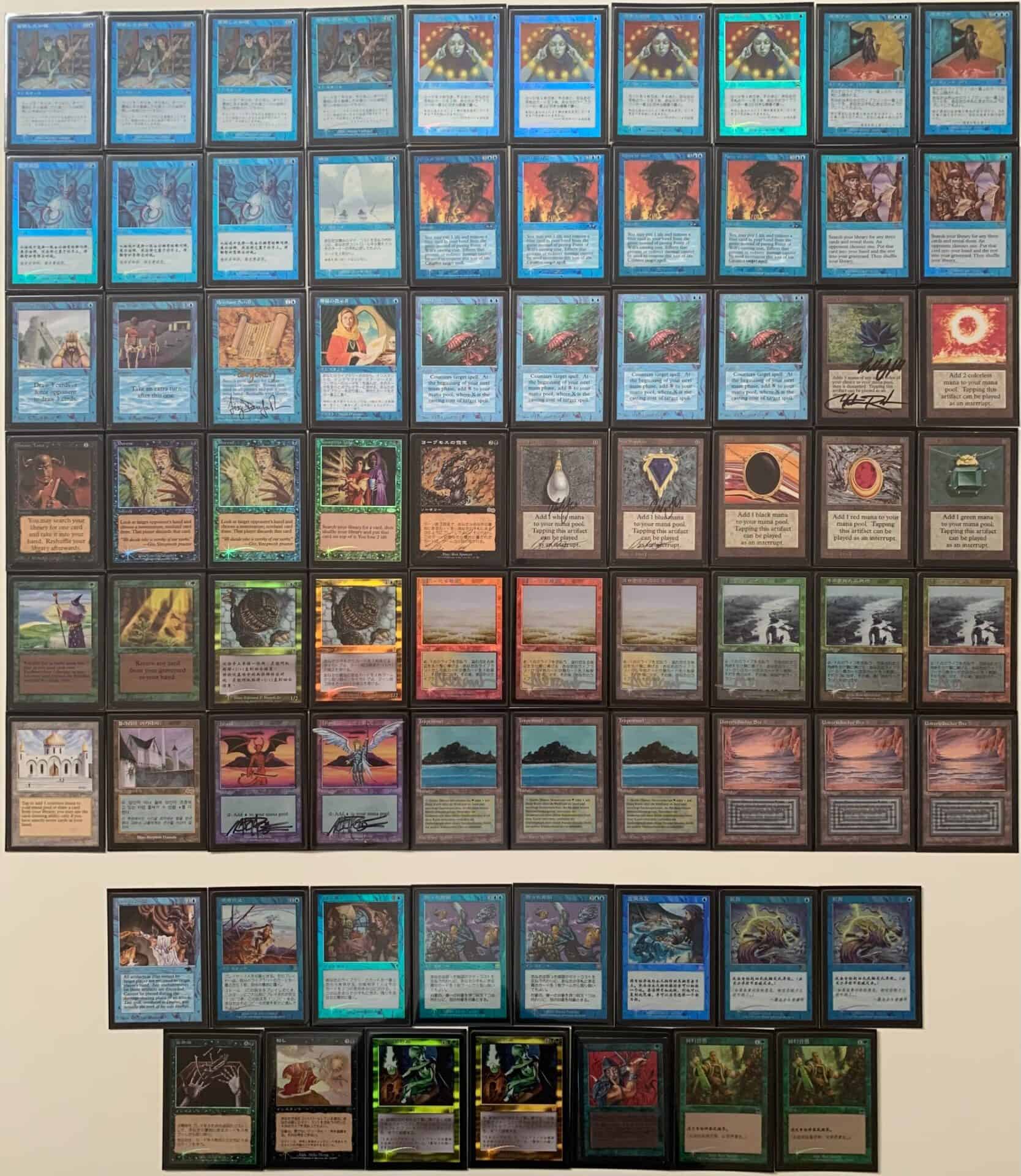The Old Frame Vintage format started from a need in collectors of Magic the Gathering cards printed with the old frame design and colours. We wanted to give actual play to our valued possessions. After all, we were not hooked by the beauty of the art and the classy design of old frame. The powerful decks, combos and creatures that accompanied us through our childhood, teenage years and early youth were the key.
Old Frame Vintage‘s metagame continued where Type 1 was as Eight Edition and Mirrodin were printed. Scourge being the final set. But since the first edition of our online league, a bit has changed.
We have seen archetypes gain popularity, others lose it and the ever present new brews having more or less success. Check our Old Frame League‘s landing page to see winning decks. Hulk Smash, Stiflenought, TPS, Bear Deck Wins or The Shining are just a few of our winners.
Let’s dive into the metagame of Old Frame Vintage, and check the most relevant archetypes and decks.
Aggro Decks
Not much there to say about Aggro decks, the original Magic the Gathering decks for most people and the love of Red magic spell players.
Get a lot of cheap creatures in play as quick as possible, beat down on your enemies until they are down to a dangerous life count and finish them off by burning them.
Extra points when you do this against a Combo player one turn before they set up or when you have enough burn spells to kill even after all the Force of Will attempts by your Control opponent.
Sligh
The ancestor of the Red Deck Wins archetype, Sligh is until proven otherwise, the most viable Aggro option in the Old Frame Vintage format and has already accrued a win in a live tournament: the I Old Frame Madrid League.
Combine cheap and powerful red creatures like Grim Lavamancer, Jackal Pup and a Taiga powered Kird Ape with all the burn spells you can afford. Lightning Bolt as the obvious first choice.
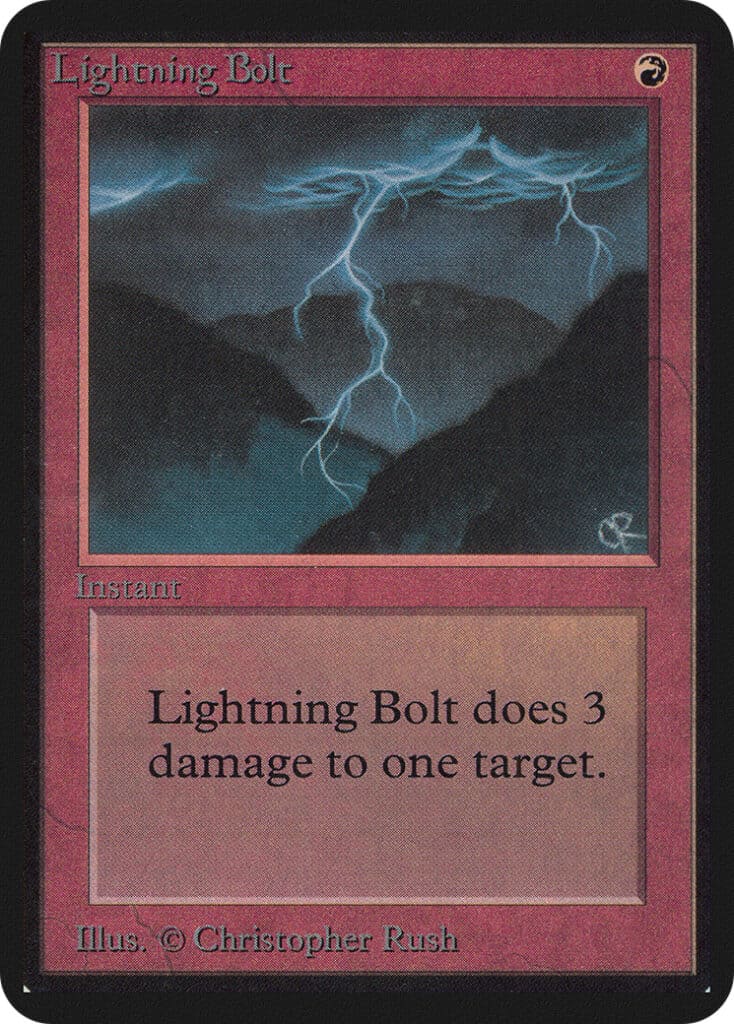
Check the winning list and other performances on our Sligh article.
Stompy
The perpetual rival of Sligh for the crown of the aggro decks in the Old Frame Vintage format, Stompy uses bigger and stronger creatures and spells to grow them even bigger instead of trying to finish you with fire. And what a great job it can do of that.
Basking Rootwalla, River Boa and even Xantid Swarm can grow big time with spells like Rancor, Seal of Strength, Giant Growth or Berserk.
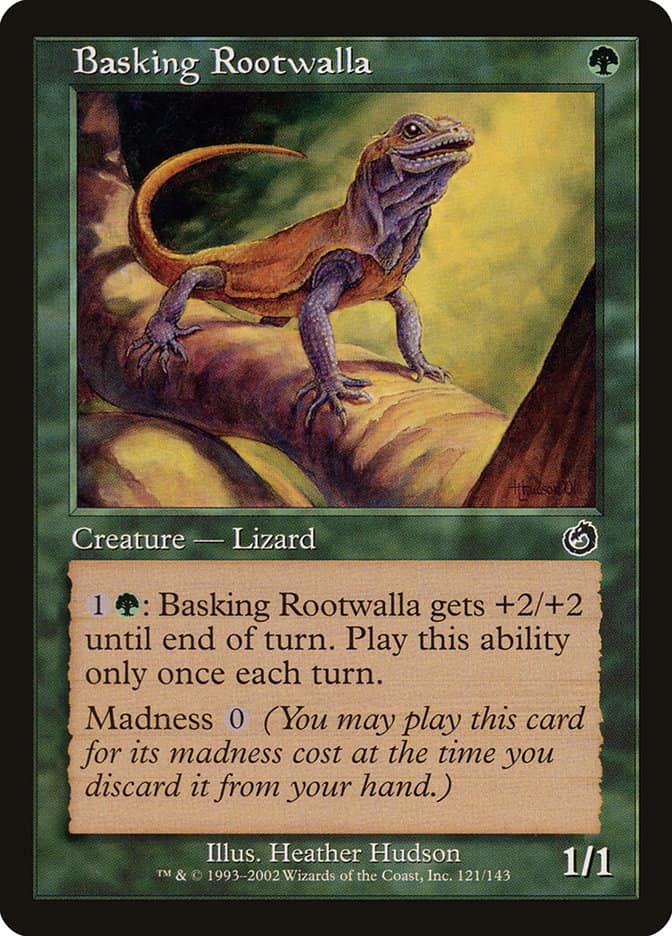
Wanna be the first one to bring the Aggro Green to victory? Check our deck list in our Stompy primer.
Combo Decks
Combo decks are to the vast majority of Old Frame Vintage players the most satisfying decks. There is nothing better than playing card after card in front of your hopeless opponent who can only hope you somehow screw up before scooping.
But sometimes you do screw up, and this is why combo decks can also be the most frustrating and their detractors avoid them like a plague.
It’s not a surprise that the format with the strongest spells in Magic the Gathering has tremendously powerful combo decks. Let’s see them.
Doomsday
Doomsday is one of those cards that has been in the mind of Magic the Gathering combo players since its release with Weatherlight. If my deck had only five cards, in the order I choose, how would I win?
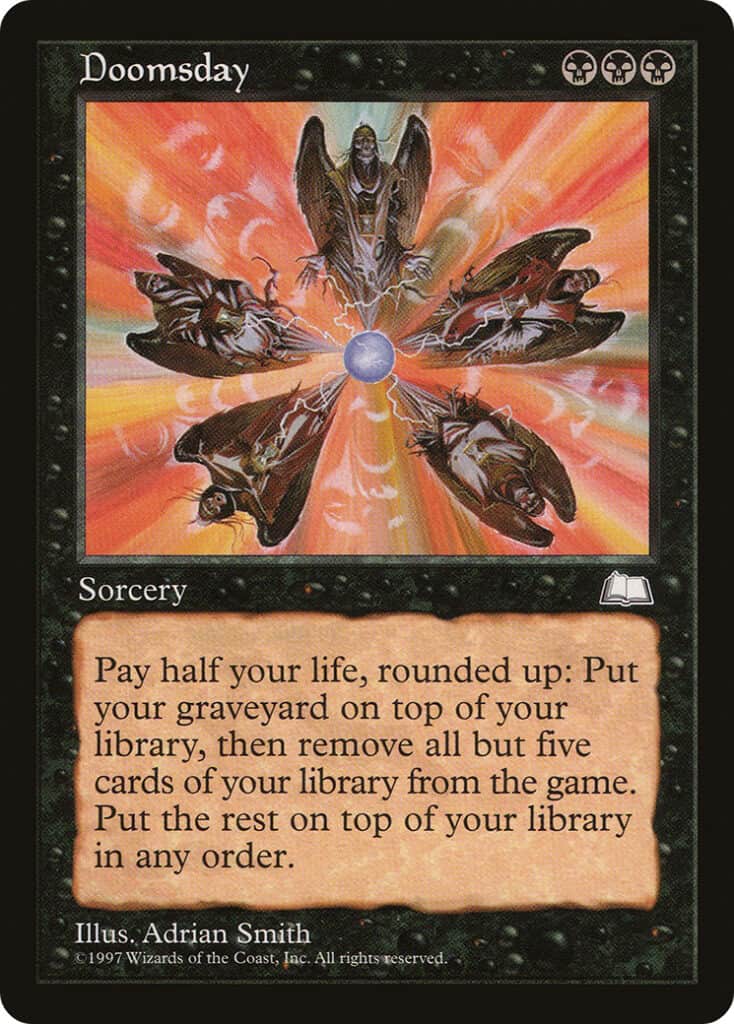
The release of Tendrils of Agony with Scourge gave yet another answer to that question and that’s usually the win condition we will see in Doomsday decks in the Old Frame Vintage format.
You can check a deck list and more in our Doomsday article.
Dreadnought
There may be several variants of the Dreadnought deck, but the bottom line is always the same: to play Phyrexian Dreadnought without having to deal with its annoying ETB. From there, having a 12/12 Artifact Creature in play and winning the game are very easy to put together.
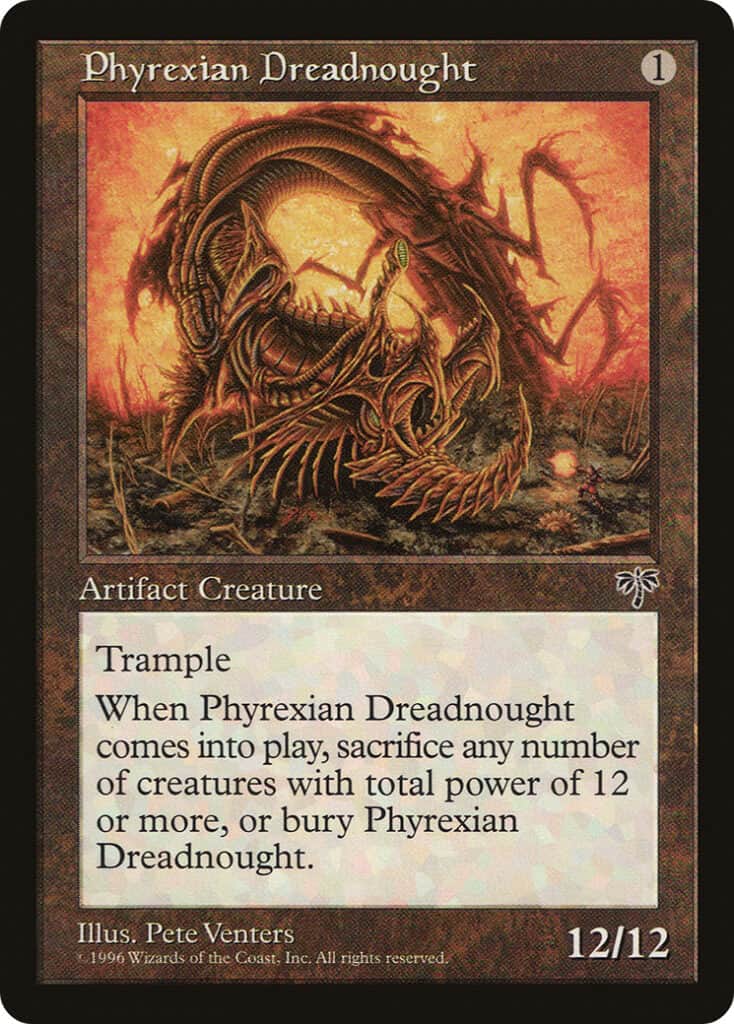
Let’s see how different decks achieve this:
- 4-Color Dreadnought: control the board with powerful spells like Duress, Force of Will or Meddling Mage and avoid the “Enters The Battlefield” effect on the Dreadnought with Stifle or Vision Charm.
- Ghoulnought: in Ghoulnought we add Reanimate + Sutured Ghoul to the the Phyrexian Dreadnought + Stifle combo as another win condition. Because a 12/12 is nice, but a potential 48/48 (or 52 with Hermit Druids around), is just better.
- MaskNought: this variant, normally UB, plays Illusionary Mask as another way to cast the Dreadnought.
- Stiflenought: similar to the 4-Color variant but with only two-three colours, to achieve more consistency. Can play Psychatog as an alternative win condition.
High Tide
High Tide is, doubtless, the second strongest spell of Fallen Empires (sorry blue guys, but Hymn to Tourach) and reason enough to say this set is not a failure like some would think.
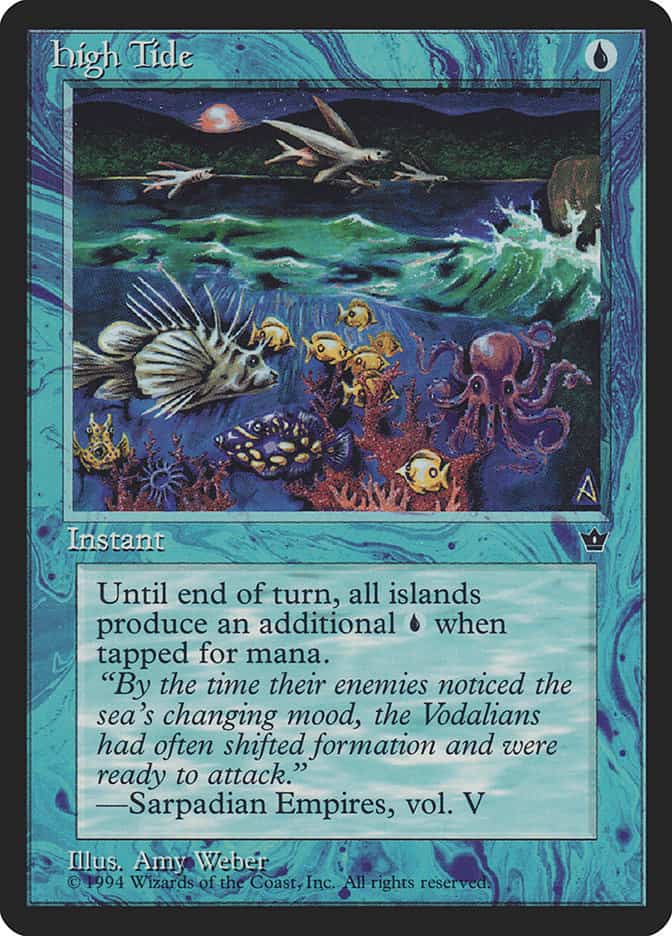
An instant spell that doubles the blue mana your Islands give until the end of turn for only U is just mental. And combined with enough control cards makes for a tremendous last turn in which a Stroke of Genius will deck your opponent.
High Tide has already seen success in Old Frame Vintage with a win in one of the first live tournaments ever, the III Old Frame Madrid League. You can read more on our High Tide article, including a deck list.
Reanimate
We all love zombies, even if they have been a bit too much everywhere for the past few years. And there is just something special to casting the most powerful creatures in the format straight from your graveyard by means of using cards like Animate Dead, Dance of the Dead, Exhume, Necromancy or Reanimate. It doesn’t matter if it is to kill with them or to do something cool with their ETB effects.
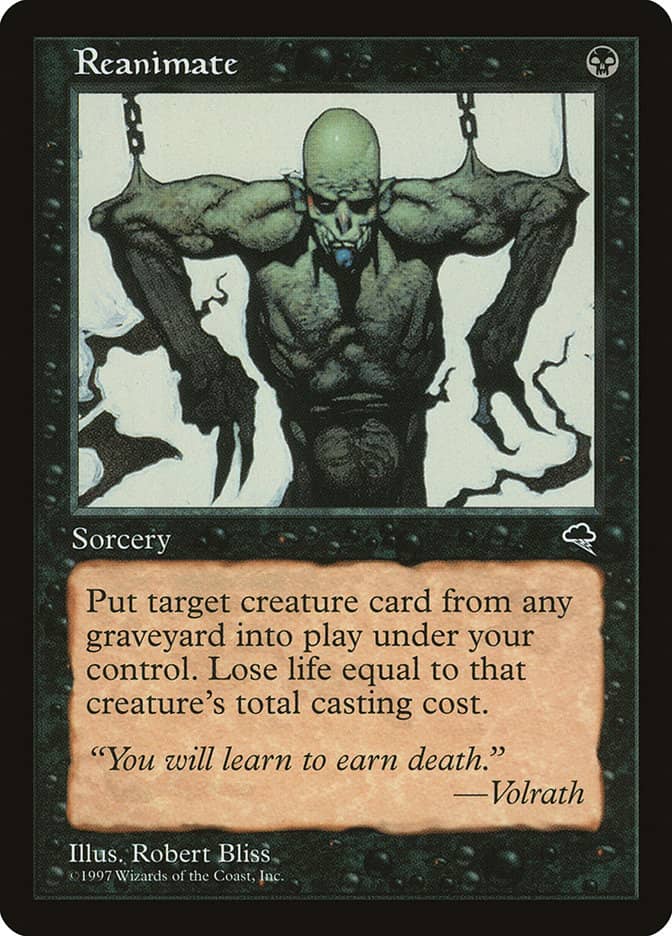
There are two main variants of Reanimate decks:
- Turbo Dragon: the star of this deck is the Worldgorger Dragon and the way it interacts with cards like Animate Dead, Dance of the Dead or Necromancy. Basically you can create an infinite loop in which all of your permanents keep on entering the game over and over again generating infinite mana that you can then use to mill the opponent with Ambassador Laquatus.
- Reanimate: forget the infinite mana, just combine Reanimate or Exhume with cards like Akroma, Angel of Wrath, Phantom Nishoba, Reya Dawnbringer, Spirit of the Night or Verdant Force. Maybe all of them! And have fun beating up!
The Perfect Storm (TPS)
The queen of the format, the most played deck and the most successful too with three victories in the first 11 Old Frame Vintage leagues. The Perfect Storm‘s name is simply a hint to it’s goal: to abuse the Storm keyword of, mainly, Tendrils of Agony.
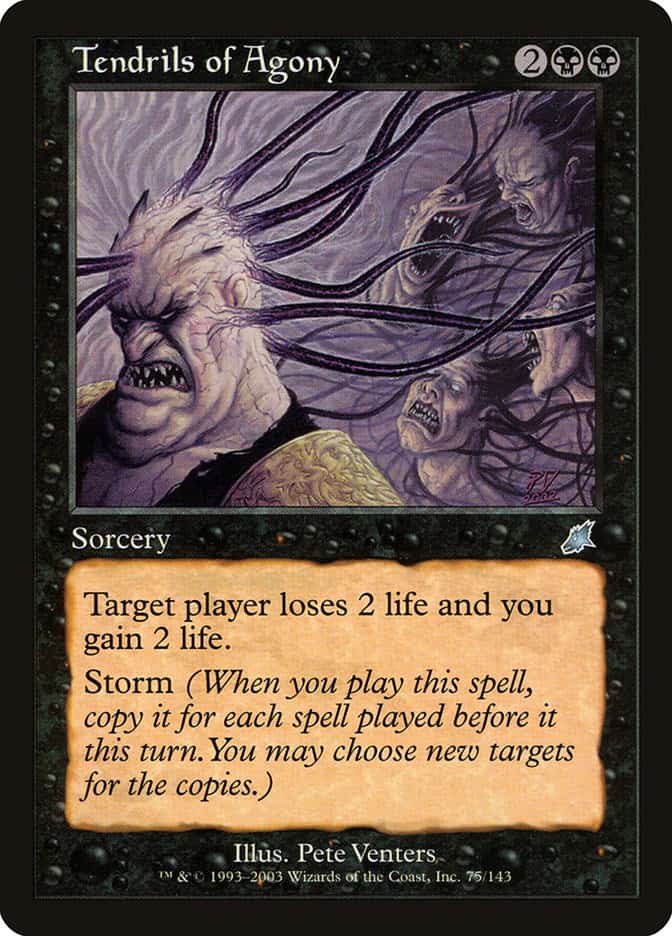
The idea is quite simple. Draw a lot of cards, play a lot of super cheap spells, recur them if possible with cards like Yawgmoth’s Will and cast as your 10th spell Tendrils to make your opponent lose 20 life as the Storm effect makes 10 copies of it.
You can read more about this deck and see a strong deck list for it in our TPS article.
Control Decks
Control decks are as old as blue spells in Magic the Gathering. Staple Alpha cards like Blue Elemental Blast, Control Magic, Counterspell, Drain Power, Mana Short, Power Sink, Spell Blast or Unsummon created a trend that still to this date continues: there is nothing more fun to a Control player than making sure your opponent doesn’t do what they want.
Of course, you cannot live only off Force of Will and Counterspells, you need cards that replenish your hand and cards that finally give you the win when your opponent’s hopes are all but gone. Control does this easily too.
Keeper
The son of The Deck the original control deck by Brian Weissman and probably the strongest control deck ever, Keeper is still an amazing option in the Old Frame Vintage format for those who prefer to react to the plays by the rival player and win only when massive control has been assessed.
For that, we go all in with Balance, Fire/Ice, Gorilla Shaman, Mana Drain, Swords to Plowshares and The Abyss amongst other control cards.
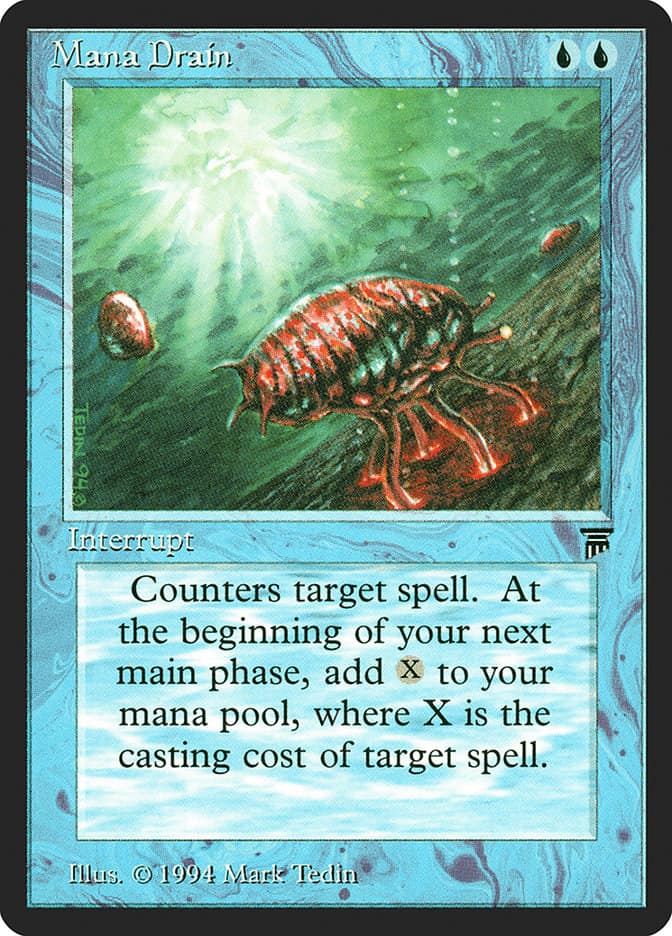
You can find Keeper deck lists and more information about the deck in this Keeper article.
Landstill
Landstill is one of these control decks that everyone forgets about until they suddenly reappear and win a tournament. Perhaps not a top choice in Old Frame Vintage, but a totally viable one.
Combining creature-lands like Mishra’s Factory and Faerie Conclave with Standstill is how the deck gets both card advantage and beats you, and what a beautiful combination it is.
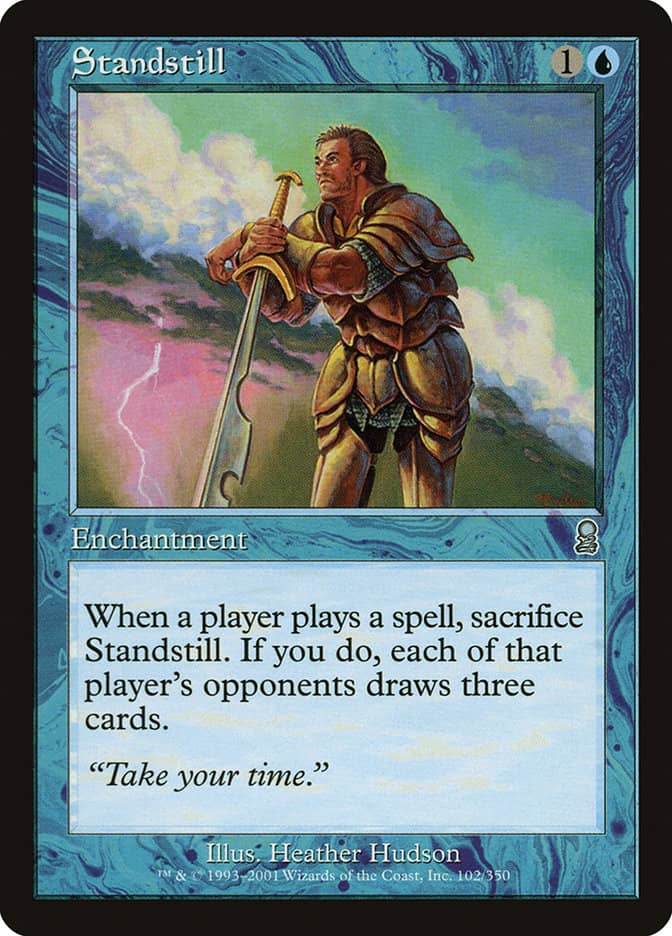
Nothing feels better for a control player than having a draw-three free “spell” in response to the first spell an opponent casts in a turn, like you didn’t have enough counter magic and hate in your hand already!
Read more about Landstill, including a competitive deck list, in our Landstill article.
Stax
Stax is also known as Prison Control, and that probably gives everything away. Guess what, if you face this deck and it gets ahead of you, you really feel like you are imprisoned. Slowly losing all of your permanents while the opponent keeps on getting advantage, that’s how it goes.
Smokestack has definitely been in some of my nightmares, laughing at me with their friends: Tangle Wire, Sphere of Resistance, and powered up by Mishra’s Workshops. I get shivers just by thinking about it.

If artifacts and control are your thing, take a look on our Stax page for deck lists and inspiration.
Midrange Decks
Midrange decks are, well, in the middle.
They are not aggro decks but they are not really control decks either since they rely on beating you down with creatures relatively quickly.
The funny thing is that midrange decks tend to perform well against both the aggro decks, since they usually have bigger creatures in less quantity, and against the control decks, because they have just enough disruption to help a couple of their creatures enter and remain in the game and beat you down before you set up your control win condition.
Let’s see which are the most popular archetypes within the midrange decks.
Hulk Smash
Hulk Smash is a deck that has a little bit of everything. Aggro with the card that makes the deck, the greatest creature ever printed in Old Frame to most people, the Psychatog.
The control comes from Duress, Force of Will and Mana Drain really disrupting the plans of the opponent while you set up. And finally a bit of a combo with the duo of Cunning Wish and Berserk to destroy the dreams of the player across you with the largest ever Atog.
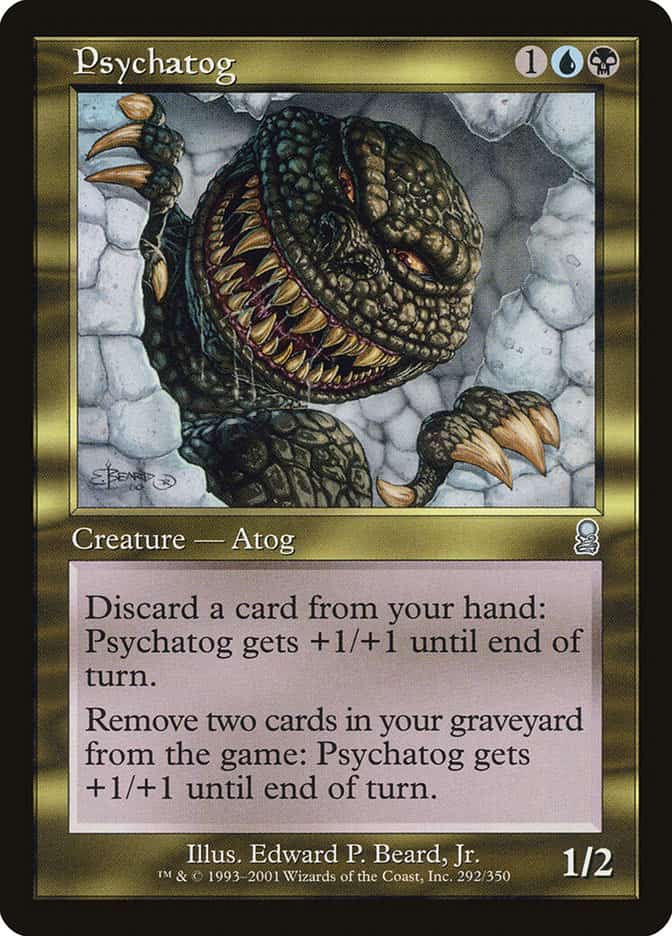
Hulk Smash really took the Vintage format by surprise around the year 2003 and it still can beat any deck on our new Old Frame Vintage. Just check our Hulk Smash article.
TnT
Oh, Tools and Tubbies, what a deck it is! Combine powerful Artifact spells, some of them creatures, cast easily with Mishra’s Workshops and the possibility to get other creatures once the ones you have in place have lost their purpose thanks to Survival of the Fittest.
Bring then even more synergy for your Artifacts with Goblin Welder and boom, this Midrange deck can easily beat you aggro style or by some sort of combo. Their choice.
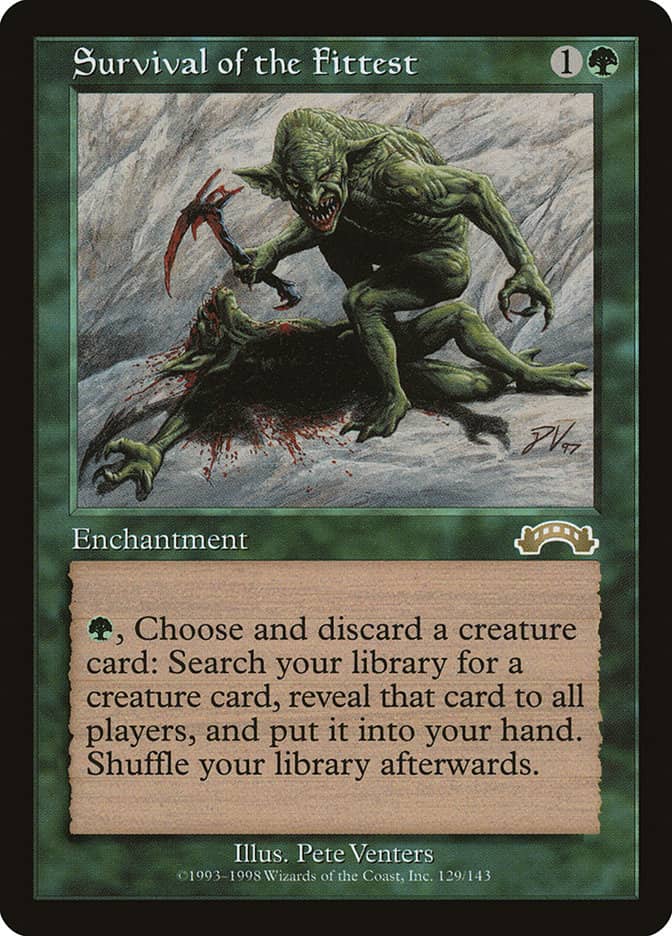
TnT has had its fair share of success already in the Old Frame Vintage format despite being underplayed with a win in the VI MTG Old Frame League. If you want to add more victories to it, check our TnT article.
Tempo Decks
Often confused (particularly by me) with the Midrange Decks, Tempo Decks are similar to them in the fact that they balance themselves between the Aggro and Control decks.
The main difference, however, is in the way their strategy works. While a Midrange deck will mostly seek to play powerful spells within the mana curve to follow a strategy, tempo decks tend to be more reactive.
The cards in a tempo deck are meant to be played at the right time by reading the board state and thus the options are any given time are abundant. It is almost an art to know when to play your threat and when to save your mana to react to an opponent’s play when playing tempo.
Bear Deck Wins
The oldest reference to a Bear Deck Wins deck in Magic the Gathering I could find online was a 2010 Mono Green Aggro deck that combined a ton of bear (mostly vanilla) creatures, Bearscape, Rancor and Overrun to have tons of fun against your opponent.
The Old Frame version of Bear Deck Wins is a bit more complex than that, unfortunately at the cost of reducing the number of bears.
The control part of this Tempo deck comes from the usual suspect Blue and White cards: Daze, Force of Will, Meddling Mage, Misdirection, Stifle and Sword to Plowshares mainly. While the aggro comes from threshold creatures, with the Werebear that gives name to the deck and Nimble Moongose.
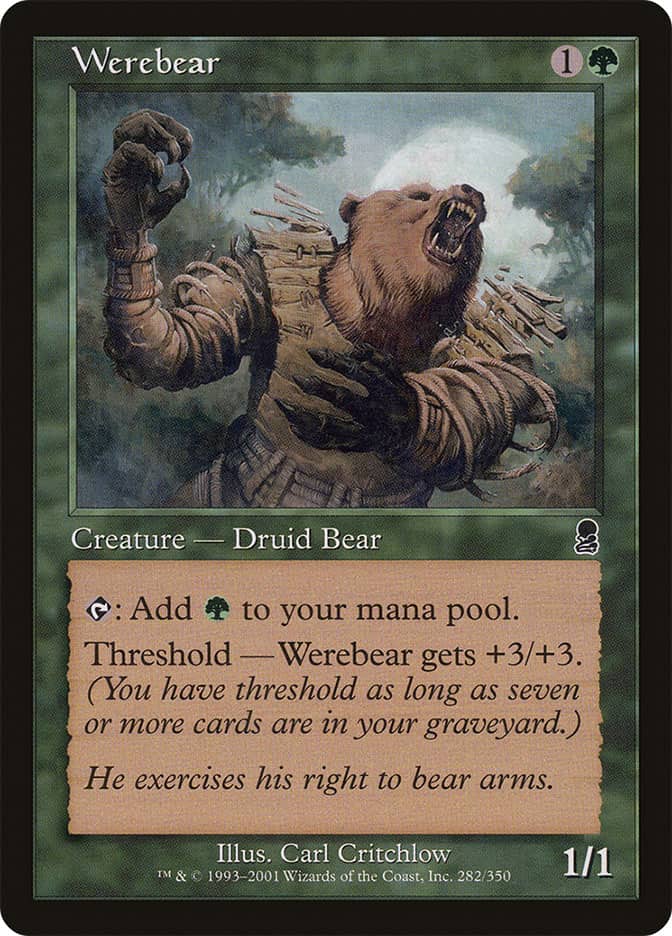
BDW is a great addition to the Old Frame Vintage meta. The fact it has already won a fair share of battles and gotten strong finishes proves it. In our article on Bear Deck Wins, Felipe Guzman did a delightful introduction to the deck. You can read how he came up with the deck list that he uses and get recommendations on playing it. It’s unmissable.
Fish
A tempo deck that uses Merfolk and land-creatures to beat you while your spells are taken care of by the disruption caused by Force of Will, Misdirection, Null Rod, Strip Mine, Wasteland and others.
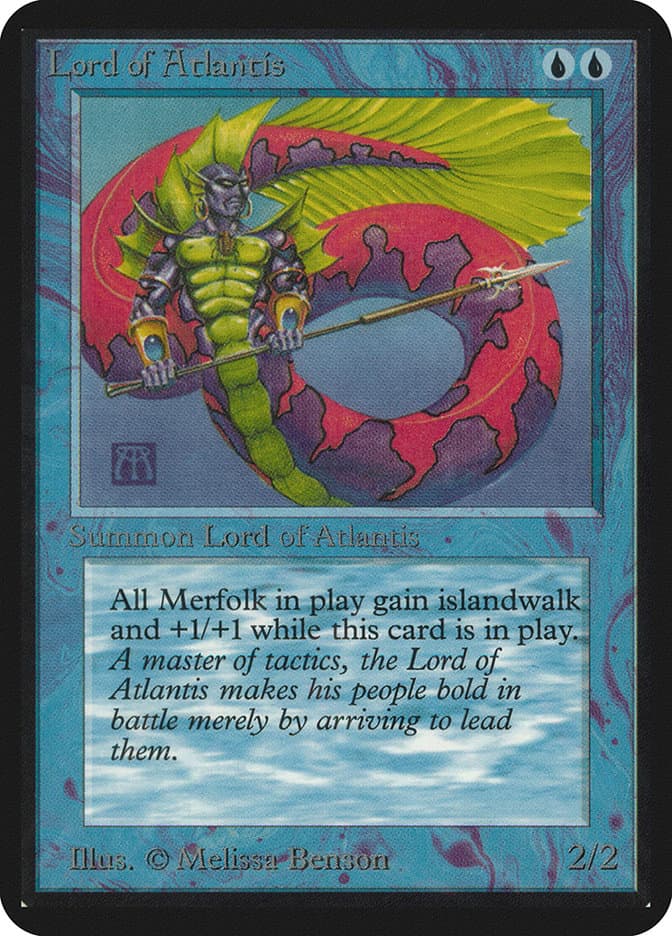
Fish also has a drawing motor in place thanks to at least one of Curiosity and Standstill. To try to get ahead of the most powerful decks.
There are several variants of the deck:
- Mono Blue Fish: the original Fish deck makes the most out of the synergy between Lord of Atlantis and other Merfolk while also having a definitely more stable mana base.
- UR Fish: Combine Fish with some of the stronger cards of Sligh, such as Grim Lavamancer and Lightning Bolt plus the Blue/Red double card Fire/Ice.
- WU Fish: The White/Blue version of Fish mainly incorporates one of the strongest creatures of the format: Meddling Mage together with Sword to Plowshares and other white disruption spells.
You can read more about this archetype by reading our Fish article.
Reap
What is the point of using Distorting Lens in a competitive Magic the Gathering deck? Well, Reap is the point. Turn your opponent’s permanents black and soon you will card advantage your way to victory.
Force of Will, Pyroblast, Wasteland, Red Elemental Blast, Gorilla Shaman and some Cunning Wishes will take care of the rest.

Get a deck list worth playing on this article of Reap.

